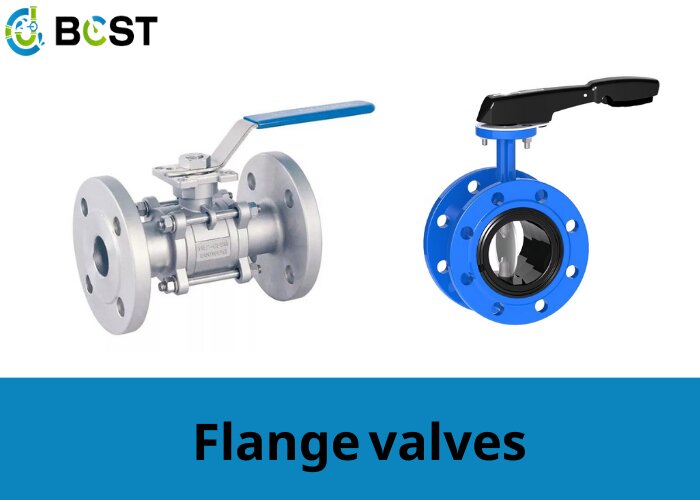
Welcome to our blog, where we dive into a crucial decision in the world of fluid control systems: the choice between Flanged Valves and Screwed Valves. These two types of valves have distinct characteristics and applications, and making the right choice can significantly impact the performance and efficiency of your system.
In this discussion, we will explore the differences, advantages, and considerations for both flanged and screwed valves. By the end of this blog, you’ll have a clearer understanding of which valve type suits your specific needs, ensuring smooth and reliable operation of your fluid control systems. Let’s begin the journey of comparing Flanged Valves and Screwed Valves to help you make the best choice for your applications.

Flanges are located at the ends of the body of a flanged valve. A flange connection is a two-material connection having an internal or external lip. A gasket installed between these materials prevents leaks. Usually, bolts are used to secure the connections, but sometimes the connections can be welded together.
- Slip-on flanges, lap-joint flanges, weld-neck flanges, and socket-weld flanges are examples of flange styles.
- Flanged valves are used in a variety of industries, including oil and gas, chemical processing, power generation, and water treatment.
- The majority of flanged valves comply with industry standards such as ANSI/ASME B16.5, DIN 1092-1/ISO 7005, and SAE J518, which describe the dimensions, materials, and technical criteria for flanges used in diverse applications.
- Flange ratings are usually denoted by a numerical value, such as Class 150, Class 300, or Class 600; the higher the number, the stronger the pressure and temperature resistance.
Advantages
- Versatility:Flanged valves are adaptable and can be used with a variety of pipe diameters and materials, such as steel, cast iron, and PVC. In addition, they handle hazardous liquids well.
- Easy to remove:Flanged valves can be easily removed from the system without removing other components. However,screwed valves are difficult to remove due to space limits.
- Strength and durability:The flanged connection adds strength and endurance to the connection, allowing it to withstand high pressure and temperature.
Limitations
- Cost:Due to the necessity for bolt tightening and gasket replacement, installing flanged valves might be more expensive.
- Size:Flanged connectors are often larger and bulkier than other connections, making them unsuitable for situations with limited space.
Screwed valves, also known as threaded valves, have threaded ends that allow them to be directly connected to appropriate pipes or fittings. Threads are standardized to ensure compatibility and maintainability. BSP, NP, and UTS are common thread specifications. Screwed valves are extensively used in plumbing systems, small-scale industrial processes, and residential settings.
Advantages
- Simplicity:Screw connections are simple to install or replace and require no special tools. Furthermore, because there are no bolts, threaded connections do not need to be tightened.
- Compact: They tend to be smaller and lighter and fit into tight spaces.
- Cost-effective:Screwed connections are less expensive because there are no multiple pieces or flange configurations.
- Vibration tolerance:Screwed valves are more resistant to pump vibrations because the threaded connection is more stable and lowers the possibility of loosening under mechanical stress.
Limitations
- Limited stress tolerance: Threaded connections may not be able to withstand high pressures and temperatures as well as other connection types.
- Corrosion: Threaded valves have threads that are more susceptible to corrosion, making them difficult to remove and potentially weakening the connection.
- Potential Leaks: Over time, threaded connections may wear or loosen, leading to potential leaks.Screwed valves require proper installation, periodic inspection, and maintenance to preserve their integrity.
Flanged Valve vs. Screwed Valve
Parameter | Flanged Valve | Screwed Valve |
Connection Method | Flanges with bolted joints | Threaded ends |
Application Range | High-pressure and high-temperature applications | Low-pressure and low-temperature applications |
Installation Complexity | More complex installation due to alignment and bolting | Simple installation by screwing onto compatible threads |
Maintenance | Easy removal and maintenance with bolted flange connection | Straightforward maintenance due to threaded connections |
Space Requirement | Require more space for flanges and bolting | Compact design suitable for space-constrained installations |
Cost | Generally more expensive due to flanges and bolts | Cost-effective |
Leakage Risk | Provides a tight and reliable seal with proper installation | Potential leakage due to wear or loosening of threaded joints |
Pressure and Temperature | Suitable for high pressures and temperatures | Not recommended for harsh pressure and temperature ranges |
Conclusion
In wrapping up our exploration of the Flanged Valve vs. Screwed Valve debate, it’s clear that both options have their merits and are suited to different situations. Your choice should depend on the specific needs of your system, budget, and ease of maintenance. Remember that there is no one-size-fits-all answer, and it’s essential to weigh the advantages and disadvantages carefully.
Ultimately, the key takeaway is to make an informed decision that aligns with your project requirements. Whether you opt for the secure sealing and durability of a flanged valve or the simplicity and cost-effectiveness of a screwed valve, the success of your fluid control system hinges on choosing the right valve for the job.
We hope this comparison has provided valuable insights and guidance for your future valve selections. If you have any further questions or need assistance in making the best choice, please don’t hesitate to get in touch. Thank you for joining us in this exploration of the Flanged Valve vs. Screwed Valve conundrum, and best of luck with your upcoming projects.







